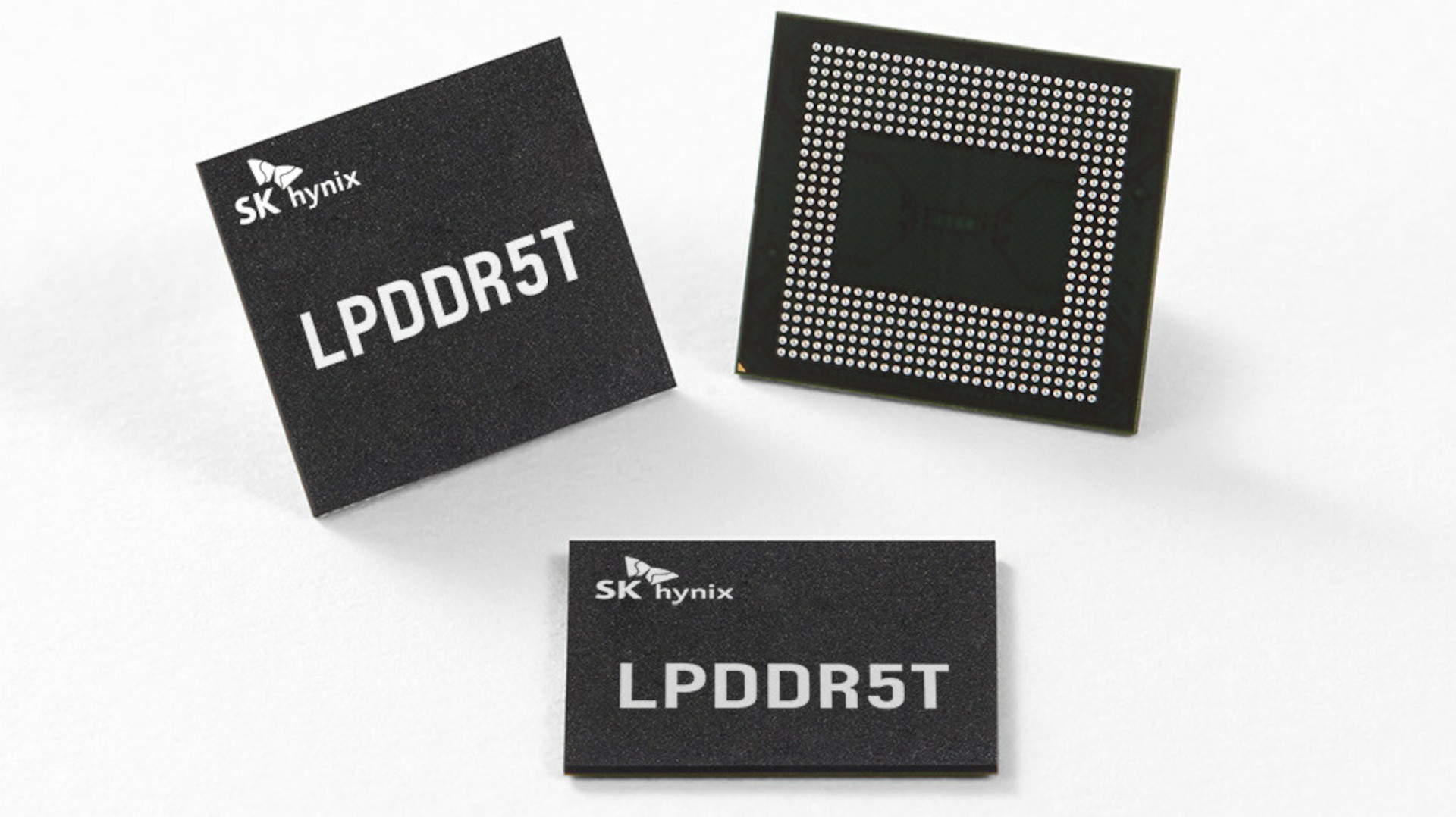SK Hynix Ships 'Turbo' LPDDR5T Smartphone Memory
LPDDR5T offers a throughput of 9.6 gigabits per second while meeting low power requirements.

SK Hynix, known worldwide as a top provider of semiconductors and DRAM, has begun supplying LPDDR5T DRAM to smartphone manufacturers. As disclosed by SK Hynix in a press release, LPDDR5T (the T stands for "Turbo") marks yet another improvement to the LPDDR5 (Low Power Double Data Rate 5) DRAM standard, this time pushing performance up to 9.6 gigabits per second per-in versus the 8.5 Gigabits per second per-pin enjoyed by LPDRR5X.
This means that SK Hynix has successfully accomplished the fastest implementation of LPDDR5 (and this may even be the last iteration of LPDDR5 before we start seeing LPDDR6). SK Hynix seems to think this is far as LPDDR5 can be pushed, anyway, since it claims this is "an upgraded project of the 7th generation (5X) prior to the development of the 8th generation LPDDR6".
With a full 16GB package of LPDDR5T, 77 GB of data can be processed every second while remaining in the voltage range of 1.01-1.12V. This is slighty above the maximum 1.1V core voltage set by JEDEC (Joint Electron Device Engineering Council) for LPDDR5 and 5X, but still very much within the range of "Low Power" memory.
For right now, LPDDR5T's only confirmed implementation is with Vivo's upcoming X100 and X100 Pro smartphones, which will have SK Hynix's LPDDR5T alongside the MediaTek Dimensity 9300, which is a chip focused on high onboard AI performance. According to Myoungsoo Park, VP of SK Hynix, "Smartphones are becoming essential devices for implementing On-Device AI technology", and so there is a "growing demand for high-performing, high capacity mobile DRAM" met by LPDDR5T.
LPDDR5T won't be exclusive to these MediaTek-powered devices, though. LPDDR5T has also previously passed compatibility validation with Qualcomm's Snapdragon chips, which enjoy a much higher market share than MediaTek's competition.
Since SK Hynix states that they have achieved compatibility with all major global partners, we'll most likely be seeing this next generation of mobile DRAM in most next-generation flagship smartphones until LPDDR6, anyway.
Get Tom's Hardware's best news and in-depth reviews, straight to your inbox.

Christopher Harper has been a successful freelance tech writer specializing in PC hardware and gaming since 2015, and ghostwrote for various B2B clients in High School before that. Outside of work, Christopher is best known to friends and rivals as an active competitive player in various eSports (particularly fighting games and arena shooters) and a purveyor of music ranging from Jimi Hendrix to Killer Mike to the Sonic Adventure 2 soundtrack.
-
thestryker It sure seems like high end LPDDR5/X like this in CAMM form would be the universal solution for mobile and desktop APU type systems to have upgradable memory. From the memory side it would allow for a move to a 256-bit wide bus without significantly more wiring or space taken up then it'd be up to AMD/Intel to implement a wider bus.Reply